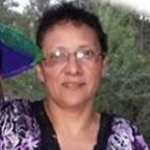In the Aftermath of the Murder of Berta Cáceres: Squashing Indigenous Resistance and Discrediting International Observers in Honduras

People who work for human rights, the rights of Indigenous communities, protection of our global environment, and social justice, are demanding justice after the murder of Berta Cáceres. She was killed in early March when gunmen broke into her house and shot her. It is abundantly clear to many Hondurans and international supporters and observers that her killing was political. Cáceres was the charismatic leader of COPINH, an organization begun in 1993 by Lenca communities in Honduras to promote their rights and protect their traditional lands, and to work with other Indigenous and popular organizations.
In the three years before her murder, Cáceres led COPINH in actively opposing construction of the Agua Zarca hydroelectric dam across the sacred Gualcarque River that runs through traditional Lenca lands in western Honduras. For her work she was awarded the international Goldman Prize in 2015 for Indigenous environmental activism. Cáceres helped to bring the Lenca struggle into global awareness, delivering an impassioned acceptance speech upon receiving the award in San Francisco. In Honduras, the Lenca and other Indigenous communities are widely seen as the front line of defense of the environment and the nation’s natural resources.
But Cáceres’ work also roused the fear and concern of those who wanted the dam as part of a larger economic development plan for Honduras that promoted foreign investment and large-scale resource extraction (mining, lumber, tourism, agribusiness) at the expense of hundreds of indigenous and peasant rural communities. These interests included the Honduran government and its powerful supporters, as well as U.S., Canadian, Chinese and other foreign interests. The Honduran company Desarollos Energéticos (DESA), with government support, held the contract for the Agua Zarca dam.
The dam builders cleared a dirt road to the construction site through traditional Lenca land without asking Lenca permission. Honduras is bound by national and international laws and treaties, including the UN Declaration on the Rights of Indigenous Peoples and International Labor Organization Convention 169 that prohibit taking or using indigenous lands or resources without “full, prior, and informed consent” of the affected communities. The Lenca claimed they were never consulted about the dam or the road. The company, DESA, also ordered them to stop using the river that had been central to their lives for many generations. In addition to private company security guards, a unit of Honduran military guarded the company’s construction compound, as if to emphasize the government’s interest in completion of the dam.
Beginning in April, 2013 and for more than four months, COPINH and the Lenca continued peaceful protest, sometimes leading processions or protest walks along the road, attracting Hondurans from other areas as well as international observers from the U.S., Europe, and Latin America. During one of these protests a Honduran soldier in the military unit guarding the dam construction compound shot and killed Lenca protester Tomás Garcia and seriously injured his teenage son, Alan.
Blaming the victim or innocent third parties is a common strategy of oppression and control. Authorities accused Cáceres and two other COPINH leaders–Tomás Gómez and Auriliano Molina–of fomenting violence, and claimed to have found a gun in Cåceres’ vehicle. DESA officials accused the three of causing economic damage by delaying the dam’s construction. After a court hearing at which more than one hundred Lenca and others gathered in support of Cáceres, she was ordered to stay away from the area of the dam protests and from any other protest activities. She was later forced into hiding for a time as authorities briefly sought her arrest, and for months before her assassination she continued to receive death threats. She reported at least thirty-three to the authorities, she said, but they did nothing, even though the Inter-American Commission on Human Rights (an arm of the Organization of American States) had mandated the Honduran government to extend protective measures to Cáceres and other COPINH activists.
In the days after the murder of Cáceres, Honduran police held and interrogated COPINH leaders Gómez and Molina and Mexican citizen Gustavo Castro, director of Mexico’s Friends of the Earth. Castro was visiting Cáceres when she was killed. He was shot but survived and was given refuge in the Mexican Embassy when Honduran authorities refused to allow him to leave the country. The police later released Gomez and Molina, but only after a hint of suspicion had been planted against them. In response, COPINH’s lawyer Victor Fernandez said, “Blaming people close to Berta is part of the crime. Leaders are murdered to terrorize communities, contaminate organizations, and squash resistance movements. This is the pattern.”
After two months of widespread popular demonstrations and protests in Latin America, the U.S., and Europe, the Honduran judicial prosecutor’s office announced charges against four men in Cåceres’ death. The identity of the four is revealing of the forces arrayed against the Lenca. Government and news sources reported that three of the four were active or retired military officers, and two are or have been DESA personnel. Sergio Rodriguez served as engineer for the Agua Zarca dam. Douglas Bustillo is a retired military officer and former head of security for DESA. Mariano Chavez is an active member of the Honduran military, and Edison Duarte is a former military officer. Before her death, Cáceres reportedly identified at least one of these men among those who had threatened her. In addition to these arrests, there are calls for the investigation and arrest of the intellectual authors of the crime, since many believe the murder was ordered, or at least condoned by higher authorities in Honduras. DESA officials have denied any responsibility.
In Honduras it is rare that prominent or powerful individuals are charged with crimes. A culture of official impunity allows the powerful literally to get away with murder. Impunity is the linchpin of the whole system of control and oppression. Some observers believe that because of the widespread and continuing concern and protests after Cáceres’ murder–concern that also aroused members of the U.S. Congress–the Honduran government was forced to show that it was treating this particular murder seriously and to bring credible charges.
Since the killing of Cáceres, COPINH members have been subjected to ongoing threats and attacks. On July 6, 2016, the body of Lesbia Janeth Uruquía, 49, was found stabbed to death near the municipal dump in Marcala, western Honduras. Like Cáceres, Uruquía was the mother of several children. She was a COPINH member and a leader in the effort to stop construction of a private hydroelectric dam on the Chinacla River. This construction project was headed by Gladys Lopez, president of the ruling National Party and vice-president of the National Congress that had authorized the project. As of this writing, no one had been charged in Uruquía’s murder.
Cáceres saw the conflict over the Agua Zarca and other such projects in the context of the support shown by then-Secretary of State Hillary Clinton for the 2009 coup against the government of Manual Zelaya. The coup is widely blamed for ushering in the current era of rampant resource extraction, violence, and repression in Honduras. In Hard Choices, Clinton writes that she advocated swift recognition of the coup and the post-coup government as an exercise in “clear-eyed pragmatism,” even as most of the hemisphere’s governments withheld recognition and demanded the restoration of the elected Zelaya government.
There is a history behind this. In the early 1980s, the Reagan Administration sent the Honduran government a blueprint for economic development (popularly known as Reaganomics for Honduras) that emphasized turning Honduras into a country wide open to foreign investment and resource extraction. Honduran government plans almost exactly mirrored this, until the Zelaya government seemed to deviate from the plan by listening to the voices of the country’s rural, peasant, and Indigenous people. The 2009 coup ended that challenge by removing Zelaya. It appeared that rhetoric about democracy and human rights clashed with the model of economic development the U.S. needed in Honduras.
Both the Agua Zarca project and the Chinacla River project are part of the larger national development plan that includes as an integral component the construction of hydroelectric dams across many of the country’s major rivers, including the Patuca (one of the largest Honduran rivers) that runs through the lands of at least three Indigenous peoples—Miskito, Pech, and Tawahka—in eastern Honduras. The electricity to be generated by these dams is intended, at least in part, to serve the needs of major mining operations in various parts of Honduras—mining projects (Honduran and foreign) that displace Indigenous and peasant communities without ever seeking their “free, prior, and informed consent.” Since the 2009 coup against Zelaya, the post-coup governments have granted a flurry of such mining concessions to U.S., Canadian, Chinese, and other foreign interests.
Murder and community displacement are two costs of such “development” projects. Another is the inequitable appropriation and use of essential resources that local communities need. Geology and hydrology experts estimate that a medium-sized mining project such as some of those proposed for Honduras can consume as much water in a few hours as a rural Honduran family would consume in a year.
Many Hondurans have long criticized this model of development. In 1980, Honduran Central Bank economist Edmundo Valladares referred to “the misery financing the model of development.” By contrast, World Bank president Jim Kim recently (April 2016) responded to the murder of Berta Cáceres in an address at Union Theological Seminary by expressing regret at her murder, then adding, “You cannot do the kind of work we are trying to do and not have some of these incidents happen. We just have to be honest when it happens, admit it, and then try to face it as best we can.” Was he implying that the killings of Indigenous and other leaders were an acceptable price for constructing the model of development? The World Bank has denied any involvement in the Agua Zarca dam project.
With its charismatic director eliminated and ongoing threats to those that remain, COPINH relies more than ever on the support of the international community. Lenca often express gratitude for the interest and support of foreign individuals and the global community. Observers from the United States, Canada, Latin America, and Europe have been present at Lenca and COPINH events. Recently, however, several international observers were public denounced by government officials and in media with questions such as, “Why is this foreigner present at a COPINH event?” In at least one case, an Italian human rights observer was deported after a campaign to discredit her.
At the same time, Honduran authorities have taken much uncharacteristic and seeming friendly interest in COPINH. Critics call this “mobbing,” a tactic of killing with kindness. The new attention is designed to confuse and co-opt COPINH’s remaining leaders and the Lenca people. But as human rights activist Ismael Moreno, SJ (Padre Melo) said several years ago after a long protest walk led by COPINH and the Garifuna organization OFRANEH, “The Indigenous peoples were highly disciplined and resistant…They were the most firm on the journey. They have resources that the rest do not have: their long history of resistance.”
Foreigners can help the Lenca and other Indigenous people of Honduras by becoming aware of the corporate and government interests and investments that their own countries have in Honduras. This extends also to foreign development and security aid and the conditions and accountability in which this aid is used. Some members of the U.S. Congress are beginning to demand this of their own government.
James Phillips, Ph.d., is a cultural anthropologist at Southern Oregon University. His book, Honduras in Dangerous Times: Resistance and Resilience, was published by Lexington Books in 2015


